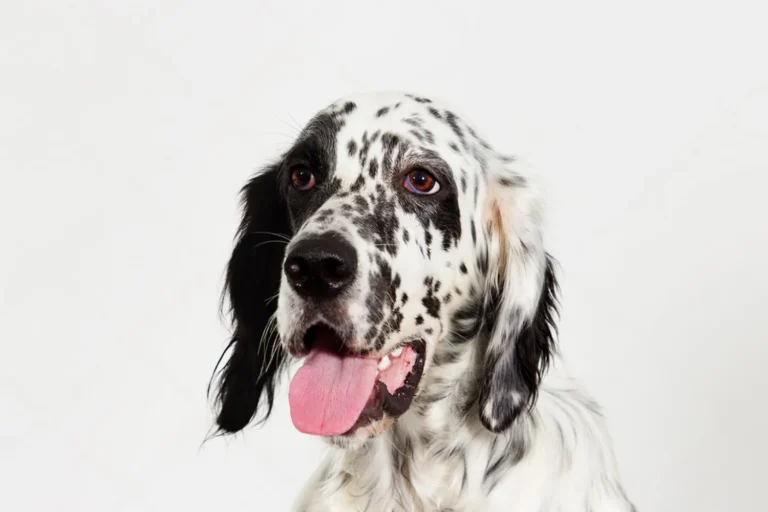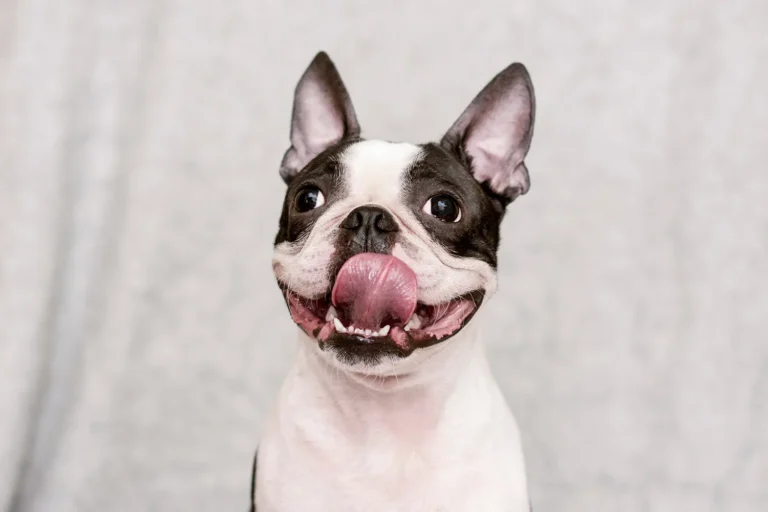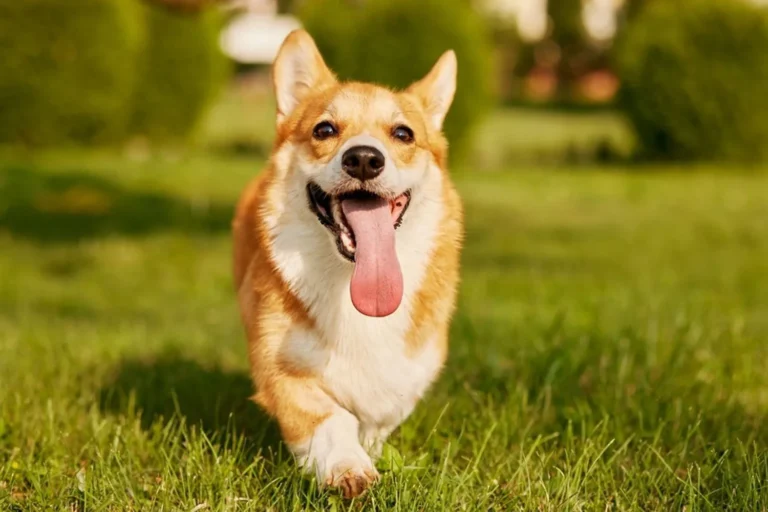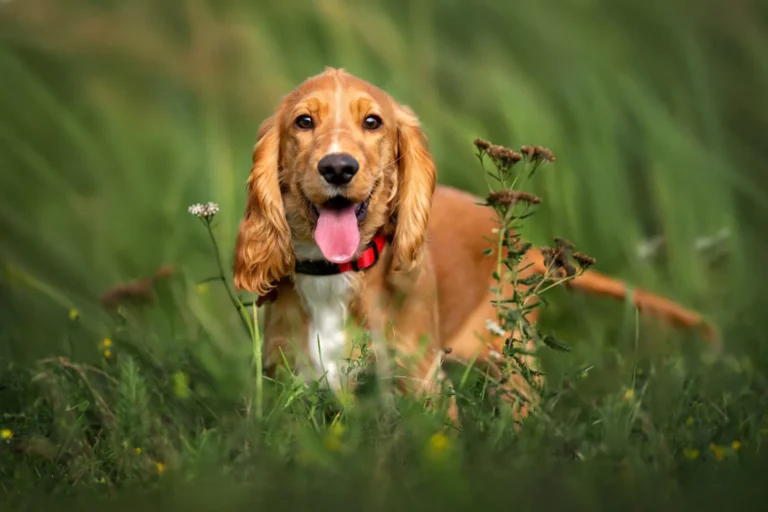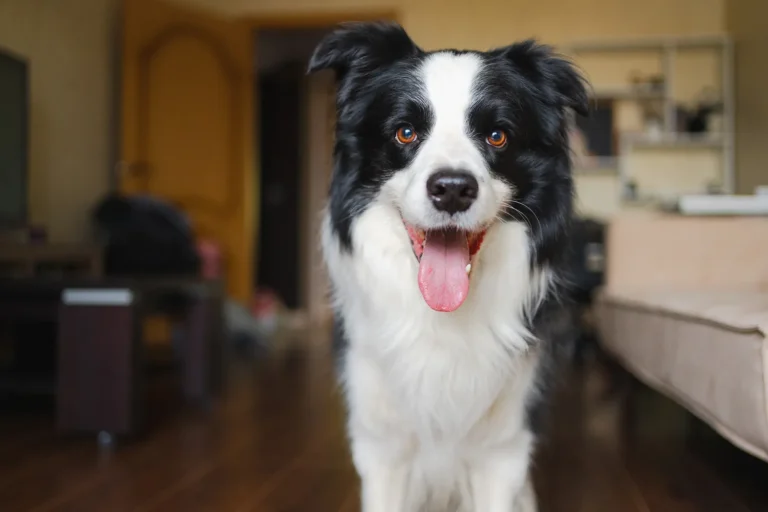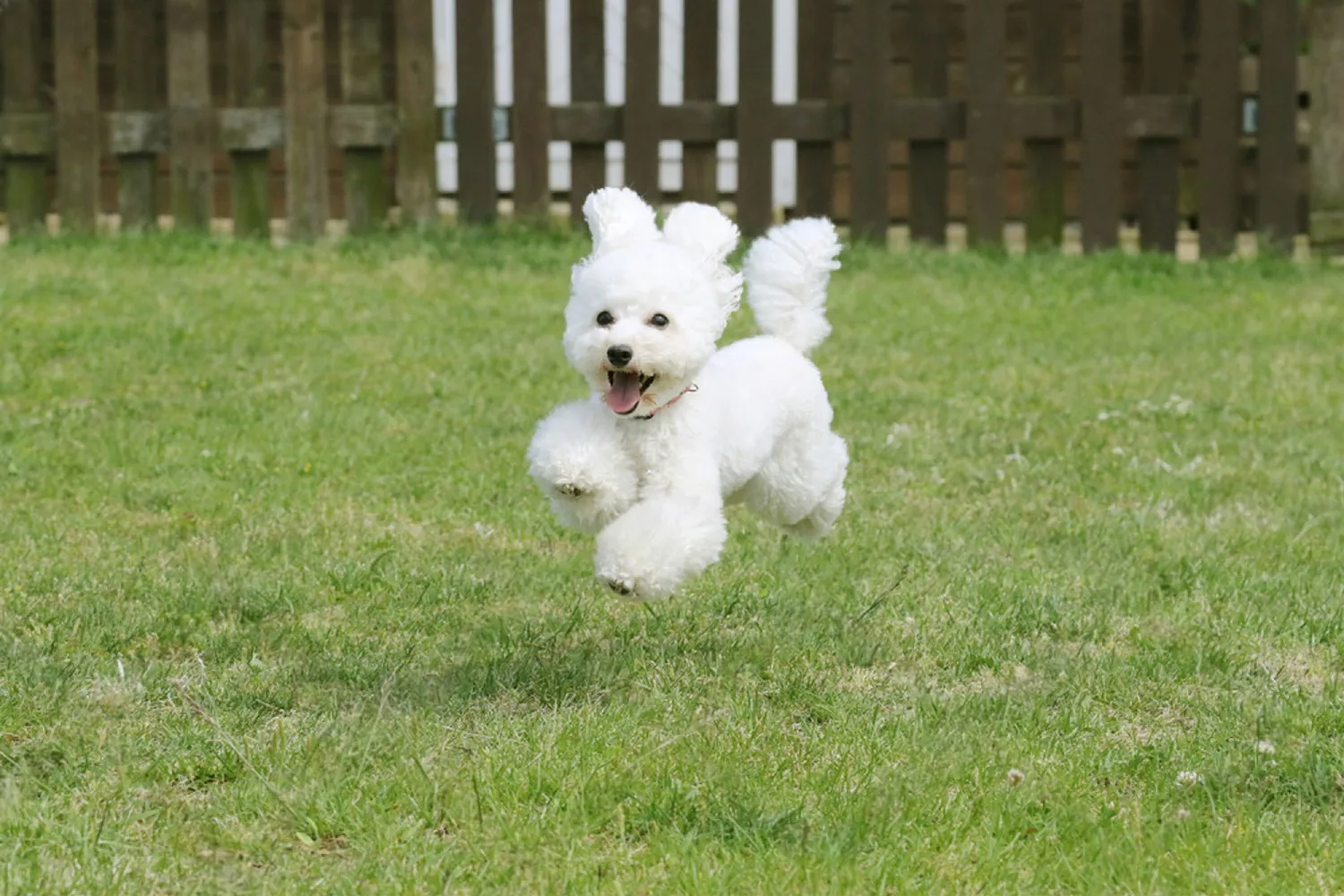
The Miniature Poodle is one of those dogs everyone recognizes instantly the curly coat, the confident little prance, that bright “I’m smarter than you think” look. I can’t count how many times strangers have guessed my friend’s dog’s breed before we even say hello. Once, a kid down the street called her “the cotton cloud with legs,” and honestly, it stuck. Whether they’re sporting a classic tidy trim or rocking a practical, short clip, Mini Poodles have a certain charisma that turns heads without even trying.
If you’re thinking about sharing life with one, just know that the style comes with some upkeep. Their coats don’t shed much, but they do need brushing to keep those curls from matting, and a trip to the groomer every few weeks makes life easier. They’re also whip smart give them puzzle toys, teach a new trick or two, and you’ll have a very happy sidekick. I like to mix short training bursts into our walks: sit at the curb, spin at the corner, a little fetch in the park. Keeps their brain buzzing, and it shows off that poodle sparkle people love to see.
Mini Poodle: History and Origins
Believe it or not, the Mini Poodle’s story starts in muddy marshes, not on velvet sofas. The very name “Poodle” comes from the German word pudel, meaning “to splash,” and both Germany and France proudly claim the breed’s beginnings. What’s clear is that Poodles were originally bred as hardworking water retrievers, especially for duck hunting. That famous Poodle clip? It began as a practical trim to keep joints warm and protect vital areas while letting the dog swim freely. I once watched a little Mini Poodle at our lakeside park launch himself after a bobbing bumper and slice through the water like a seal no hesitation, all business. The “splash” in their name makes perfect sense when you see it.
As the breed’s talents and charm caught the eye of European society, Poodles moved from the marsh to the city. In the early 20th century, breeders carefully downsized the larger working Poodles into Miniature and Toy versions, keeping their sharp brains and cheerful attitude but packaging them for life in apartments and salons. A breeder I chatted with in California told me she still tests her Minis with fetching and scent games to honor those roots. My advice: let history guide you. Even a small Poodle loves a job water play, retrieve games, or nose work puzzles and regular grooming keeps that iconic coat comfortable and healthy. They may be petite, but they’re still athletes in tuxedos.
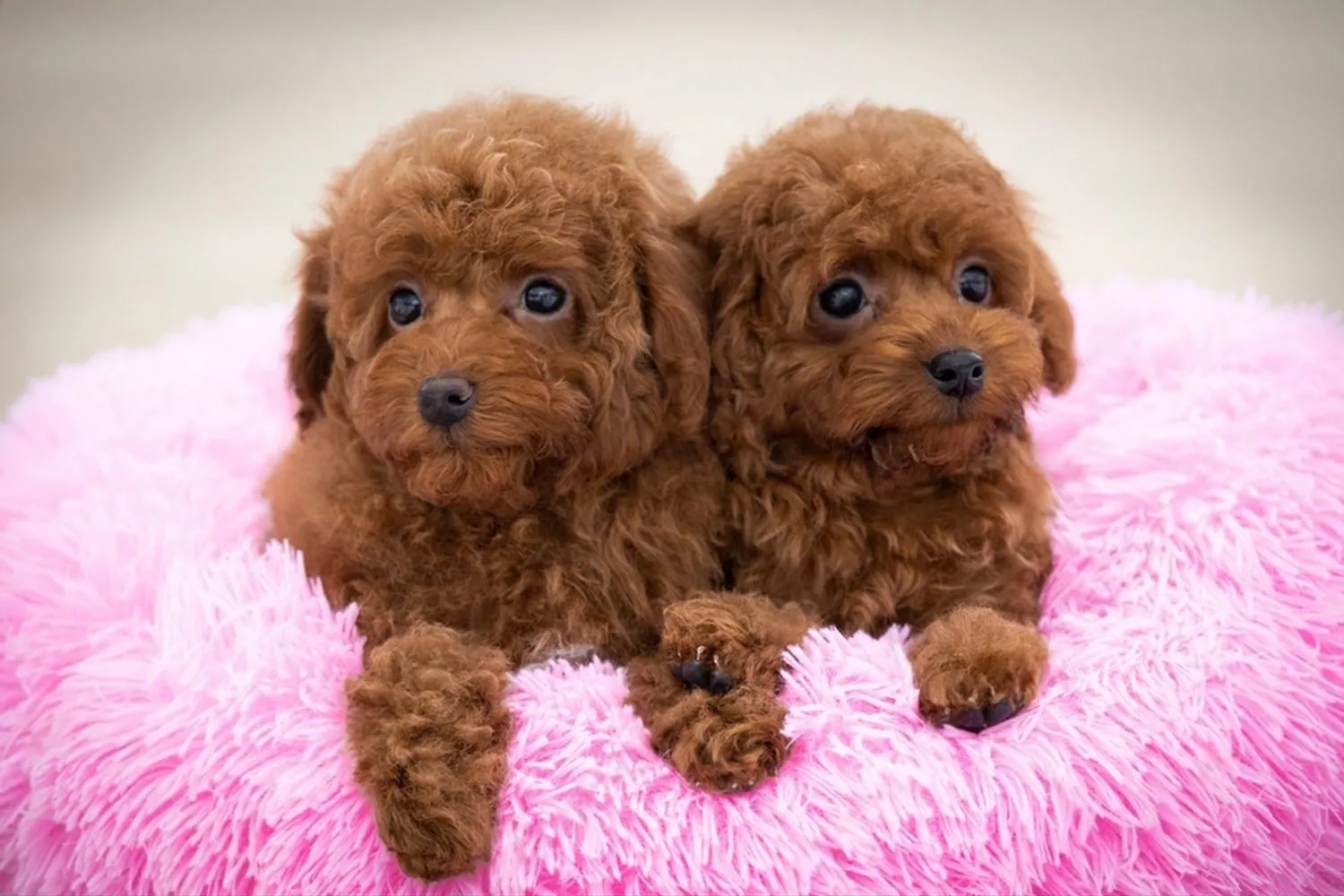
What Is a Miniature Poodle?
If you’ve ever met a Poodle and thought, “Wow, that dog is putting on a charm offensive,” you’re not wrong. Poodles come in three recognized sizes Standard, Miniature, and Toy and the Miniature Poodle hits that sweet spot: big dog brains and elegance in a more manageable, apartment friendly package.
Poodles were originally bred as hunting dogs, but these days they’re in the American Kennel Club’s Non Sporting Group. Don’t let that label fool you, though. Miniature Poodles are famously sharp one of the most intelligent dog breeds around. I learned quickly that “sit” and “stay” were just the warm up; my Mini could master a new trick over a weekend. If you love teaching games or setting up puzzle toys, this is your people pleaser in a curly coat.
Speaking of coats, here’s a cool fact that surprises a lot of folks: Miniature Poodles have hair, not fur. That means their hair grows continuously, much like ours, and it sheds far less than many breeds. The flip side? Grooming is part of life with a Mini. I keep a soft slicker brush by the couch and make a nightly habit of a quick brush while we watch TV. A professional groom every 4-6 weeks keeps mats at bay and makes daily upkeep a breeze. Whether you prefer a practical puppy clip or something a little fancier, you’ll find a style that fits your routine.
Coat color can be wonderfully diverse, depending on the dog’s pedigree and purpose. If a Miniature Poodle is bred for the show ring, the coat must be a solid color. Accepted solids include:
– Brown
– White
– Cream
– Apricot
– Black
– Red
– Silver Beige
– Gray
– Silver
– Blue
For Miniature Poodles that aren’t bred as show dogs, you’ll also see striking combination coats. I once fostered a black and white “tuxedo” Mini who turned heads everywhere we went. Common combinations include:
– White and Apricot
– White and Silver
– Brown and White
– Brown and Apricot
– Black and White
– Black and Cream
– Black and Apricot
– Black and Brown
– Black and Red
– Black and Gray
– Black and Silver
– Black and Tan
– Blue and White
– Red and Apricot
– Red and White
– Cream and White
– Gray and White
– Café Au Lait
Beyond looks, Minis tend to be lively, affectionate companions who thrive on being included. Mine liked to “help” with house chores by which I mean he supervised closely and then celebrated like he’d done the vacuuming himself. A bit of advice from my home to yours: plan for both brain work and brisk walks. Ten minutes of training games before dinner can make bedtime calmer, and rotating a few puzzle toys keeps their brilliant minds engaged.
And in case you’re wondering about legitimacy, the Miniature Poodle is a purebred dog recognized by the American Kennel Club. That recognition helps ensure consistency in size, temperament, and those signature curls we all adore.
In short, if you want an elegant, clever, people oriented dog with a coat you can style to your heart’s content, the Miniature Poodle is a delightful choice. Just bring your brush, your treat pouch, and your sense of humor you’ll use all three.
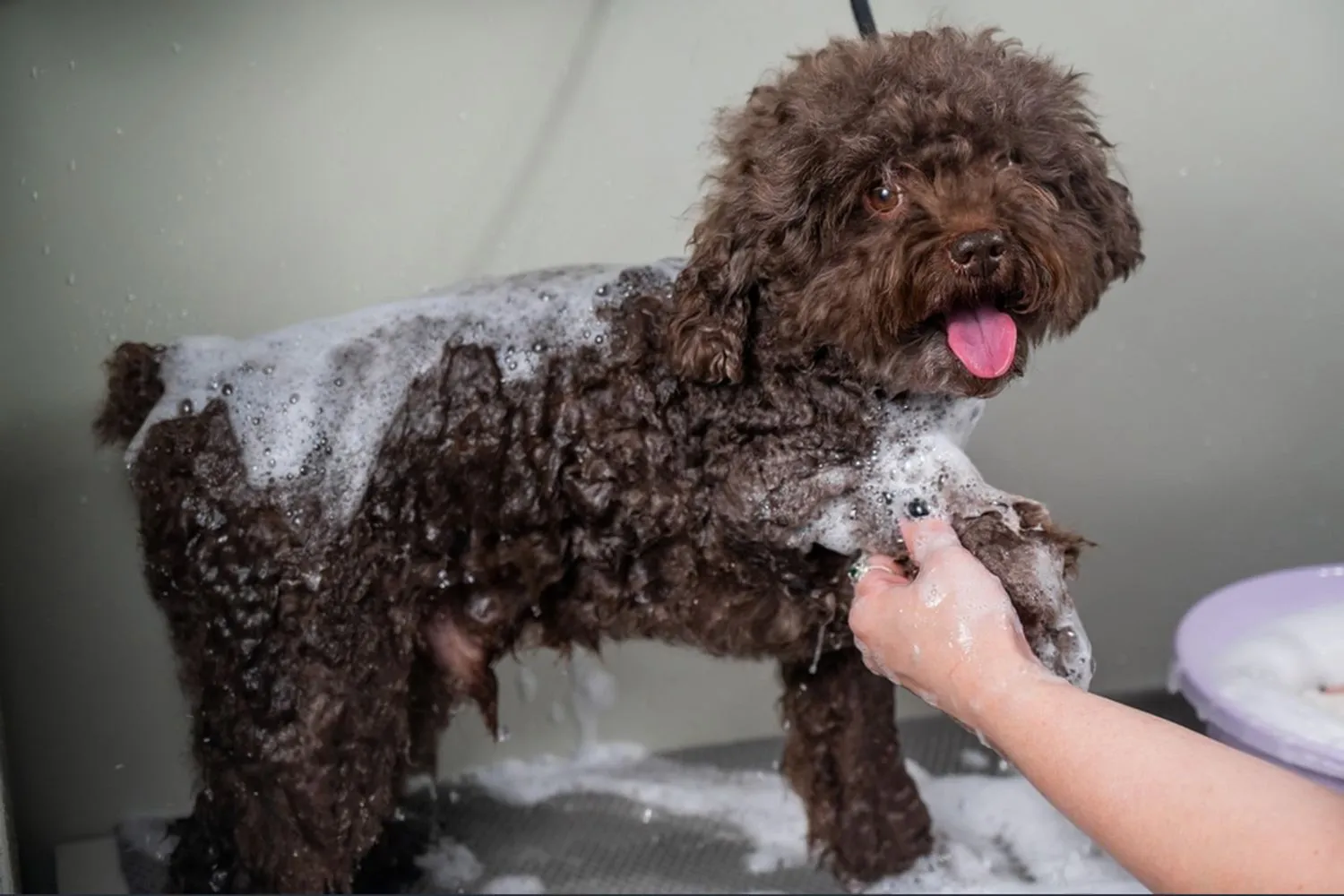
Who Is a Mini Poodle Best For?
Miniature Poodles are the kind of dogs that make you think, “Ah, this is what having a dog is supposed to feel like.” They’re bright eyed, affectionate, and full of personality even as puppies, when they’re especially irresistible and just a bit mischievous. I remember meeting a neighbor’s Mini Poodle pup who would zoom around the yard like a wind up toy, then curl up in my lap as if to say, “Okay, I’m done now.” It’s easy to see why so many owners call them a dream dog.
They do best with a daily walk (and they won’t complain if you make it a long one). Minis are happiest when they can stretch their legs and sniff to their heart’s content. Active families tend to love them because they can keep up on a long neighborhood loop or a weekend park stroll. One of mine used to trot alongside my bike at a gentle pace, ears bouncing like little springs. Just a heads up with puppies: they can dart away in a flash if something exciting catches their eye. Start leash training early, practice a solid recall, and use a secure yard or harness so those curious little legs don’t outpace your reflexes.
Personality wise, Mini Poodles are loyal to their people and often show a gentle protective streak. They’re playful, clever, and absolutely soak up attention, which is why they fit beautifully with so many lifestyles families with kids who like to play fetch, couples who enjoy long evening walks, older adults who want a devoted companion, or individuals who appreciate a smart, engaging sidekick. A breeder I spoke with in California told me her Minis “read the room” better than most people: ready to romp when the tennis ball comes out, but just as content to relax at your feet during a quiet afternoon.
Their small size is a huge plus for apartment living, as long as you commit to daily exercise and a bit of mental stimulation. A few brisk walks, some training games, and a puzzle toy can go a long way. That said, Mini Poodles want company. They’re not a great choice if the home is empty most of the day. If you work from home, have staggered schedules, or can arrange a midday dog walker, they’ll thrive. On rainy days, I’ll do a longer indoor training session sit, stay, spin, find the treat and it tires them out almost as much as a long walk. Give them your time and attention, and a Mini Poodle will give you their whole heart right back.
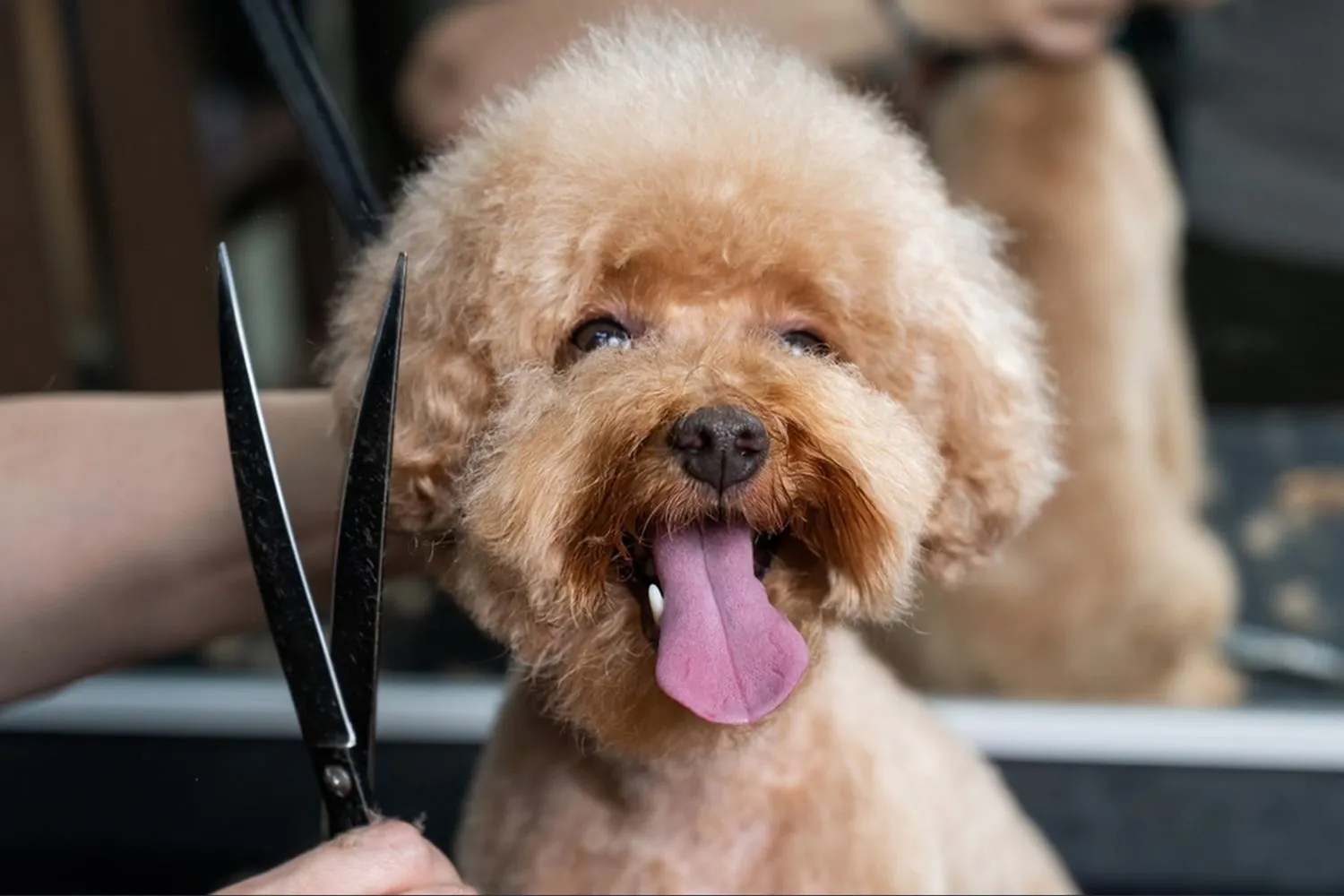
Mini Poodle Grooming and Shedding
Miniature Poodles don’t litter your house with tumbleweeds of fur, but they do ask for consistent grooming love. Their curly coat grows continuously more like human hair than “typical dog fur” and while it’s considered non shedding, that loose hair gets caught in the curls and can form mats if you skip brushing. I learned that the hard way after a busy two week stretch; we went in for a routine trim and came out with an adorably short “lamb cut” because the mats had taken over behind the ears and under the collar.
Plan on brushing a Mini Poodle every day or every other day. A slicker brush and a metal comb are your best friends, and a spritz of detangling spray helps the comb glide through those tight curls. Pay extra attention to friction zones: behind the ears, armpits, the chest where the harness rubs, and the tail base. The worst matting often happens when they’re transitioning from puppy coat to adult coat somewhere around the first year so keep sessions short, sweet, and frequent. I like to smear a little peanut butter on a lick mat during brushing; it turns “ugh, grooming” into “best day ever.”
Professional grooming is part of the Mini Poodle package. Most owners schedule a full groom every 4-8 weeks, depending on coat length and lifestyle. Prices vary by location, but think of it like a recurring bill my groomer jokes that Poodles are on the “subscription plan.” If you adore the fancy show look (topknots, clean face, the whole nine yards), be ready for more time and upkeep. If you just want a cute, easy pet trim, ask for a teddy bear or lamb clip shorter coats tangle less and are easier to maintain between appointments. Bathing every 2-3 weeks works for many Minis; always blow dry and brush out completely after a bath, because air drying can tighten curls and lock in tangles.
A few extra details make a big difference:
– Eye staining: Mini Poodles can have tear staining. Wipe the corners of the eyes daily with a damp cloth, keep face hair neatly trimmed, and consider filtered water and stainless steel bowls. If staining is heavy or the skin looks irritated, check with your vet sometimes it’s allergies or a blocked tear duct. Skip harsh whitening products near the eyes.
– Nails: Trim every 2-3 weeks. If you hear click clacks on the floor, they’re too long. A nail grinder can help you avoid the quick and leaves a smooth finish.
– Teeth: Brush daily with dog safe enzymatic toothpaste. Start young and keep it fun. Dental chews help, but they don’t replace brushing or the occasional professional cleaning.
– Ears: Poodles often have hair in their ear canals. Clean weekly with a vet approved solution. Ask your vet or groomer whether ear hair should be plucked recommendations vary by dog.
One last tip: match coat length to your routine and climate. I keep mine a bit longer in winter and shorter in summer, but never shaved to the skin curly coats still protect from sun and scrapes. With a regular schedule and a little practice, grooming becomes a sweet bonding ritual. And trust me, there’s nothing like that freshly trimmed Mini Poodle strut it’s like they know they look fabulous.
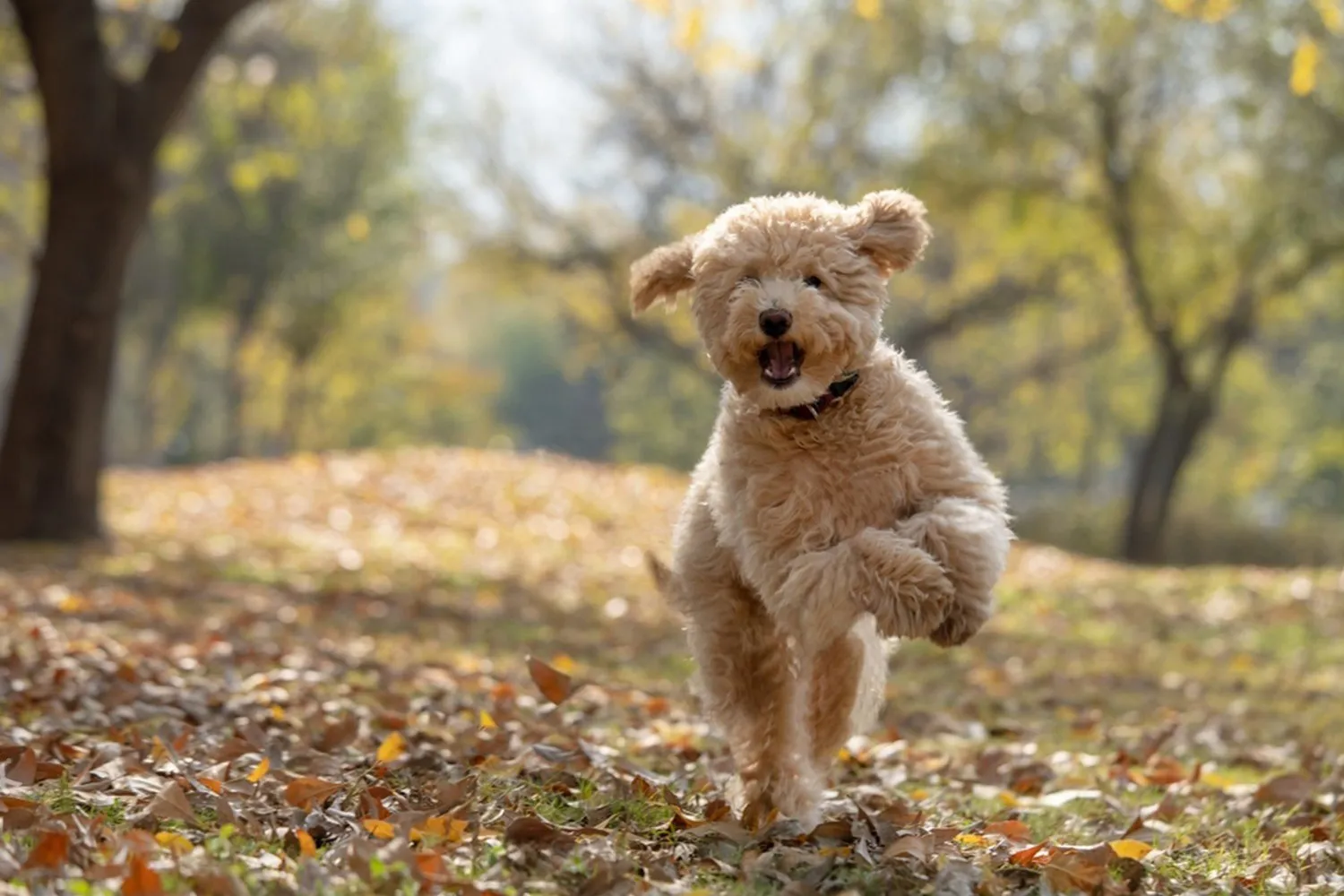
Do Mini Poodles Bark a Lot?
Mini Poodles are usually moderate barkers think “I’ll let you know what’s happening,” not “I’m going to narrate your entire day.” They’re smart, sensitive little watchdogs, and most of their barking boils down to communication. The key is understanding why they speak up and showing them what to do instead. With a bit of training and routine, the noise level settles nicely.
Common triggers I see with Minis:
– Being left alone: Some protest at first, especially if you rush goodbyes.
– People entering the home: Doorbells are basically drama buttons.
– Loud weather, especially thunder: Sensitive ears, big emotions.
– People or cars passing by: “Intruder!” translates to a few quick alerts at the window.
– Getting excited: Reunions, leashes, and treat bags can spark happy yaps.
– Protecting you: They’re loyal and want to keep you safe.
– Feeling threatened: New dogs or crowded spaces can be overwhelming.
What helps is training and management, not scolding. I teach a “quiet” or “thank you” cue: let two alert barks happen, say “thank you,” then reward when they pause. It turns the job from “keep barking” into “report and relax.” My Mini Poodle neighbor, Daisy, learned in a week that two doorbell barks earned her a sniff mat on the rug she now trots away from the door like it’s her idea.
A few easy tweaks make a big difference:
– Exercise and brain work: Sniffy walks, puzzle feeders, and short training games deflate extra energy that turns into noise.
– Window management: Frosted film or moving a perch breaks the “squirrel news channel.”
– Calm comings and goings: Keep departures boring; leave a stuffed Kong so alone time feels like a snack break.
– Sound desensitization: Play soft thunder recordings paired with treats; slowly increase volume over days.
– Socialization and confidence: Meet friendly people and dogs at a pace your poodle can handle.
Mini Poodles aren’t destined to be yappy; most barking is a training and routine issue. These dogs are clever and eager to please. Once they understand the rules and have an outlet for their brains and zoomies, the soundtrack at home becomes pleasantly quiet with an occasional “Hey, someone’s at the door!” just when you need it.
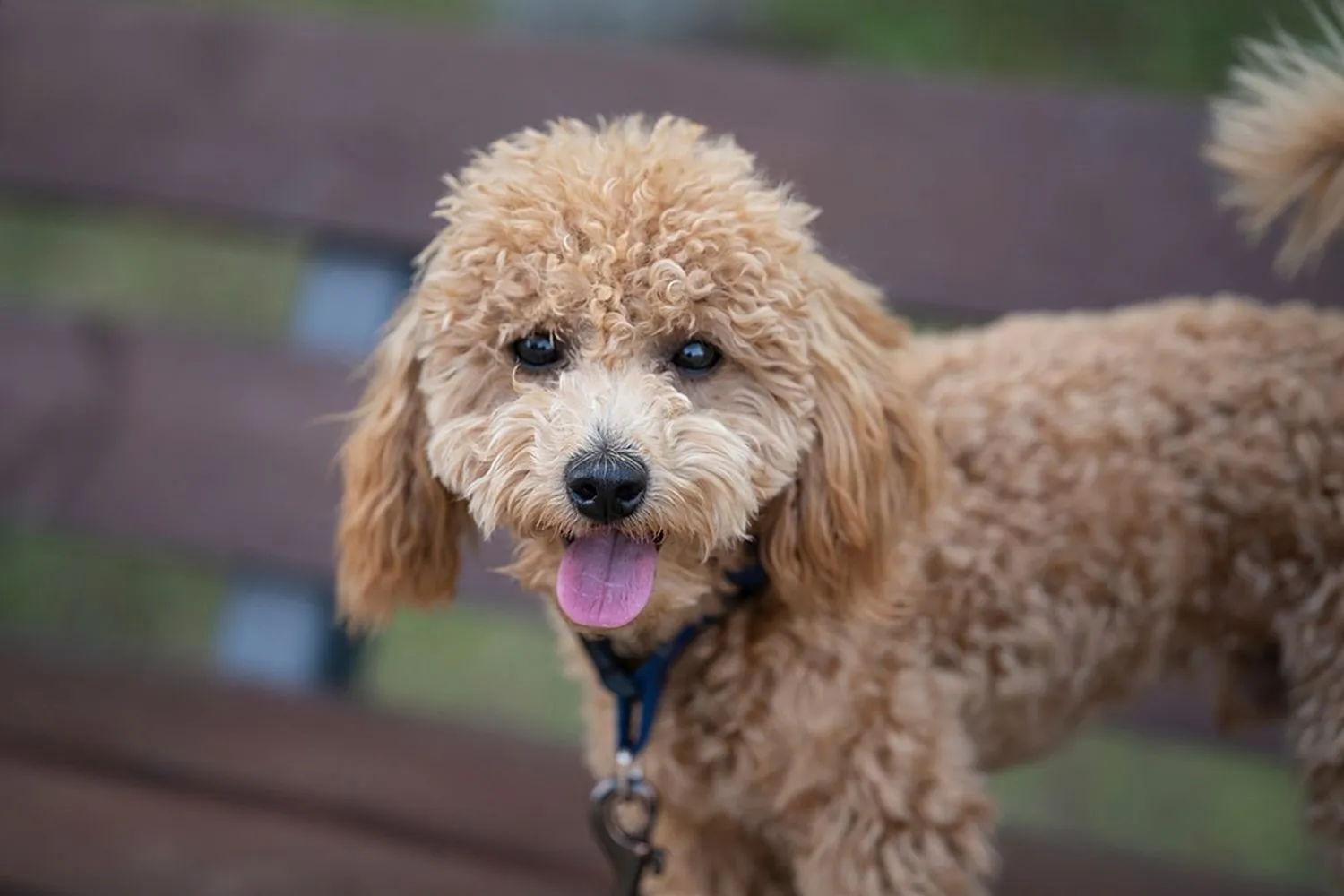
What Is the Average Weight and Height of a Mini Poodle?
Most adult Miniature Poodles stand between 28 and 38 cm at the shoulder and weigh around 12 to 14 kg. That’s roughly 11 to 15 inches tall and 26 to 31 pounds if you like conversions. Some minis are a little more compact and others a bit stockier, but most healthy adults settle into that range once they’re fully grown. I’ve noticed boys can look a touch broader, while girls often seem a bit more refined, though it really comes down to build and activity level. And don’t let the fluffy curls fool you coat volume can hide a lot, so a dog that looks “big” might just be having a good hair day.
If you’re measuring at home, measure height at the withers (the top of the shoulders). I use a hardcover book against the shoulder and a pencil mark on the wall learned that trick after my first wobbly tape measure attempt. For weight, the bathroom scale method works: weigh yourself, then weigh yourself holding your dog, and subtract. My friend once swore her Mini had “mysteriously grown” over winter; a quick scale check told us it was just a sneaky kilo from extra couch time and treats. Aim to feel ribs with a light touch, keep walks and play consistent, and recheck every month or so. Most minis reach their adult height by about 10 months and fill out soon after, so those first year check-ins really help keep them in that sweet, healthy range.
https://en.wikipedia.org/wiki/Poodle
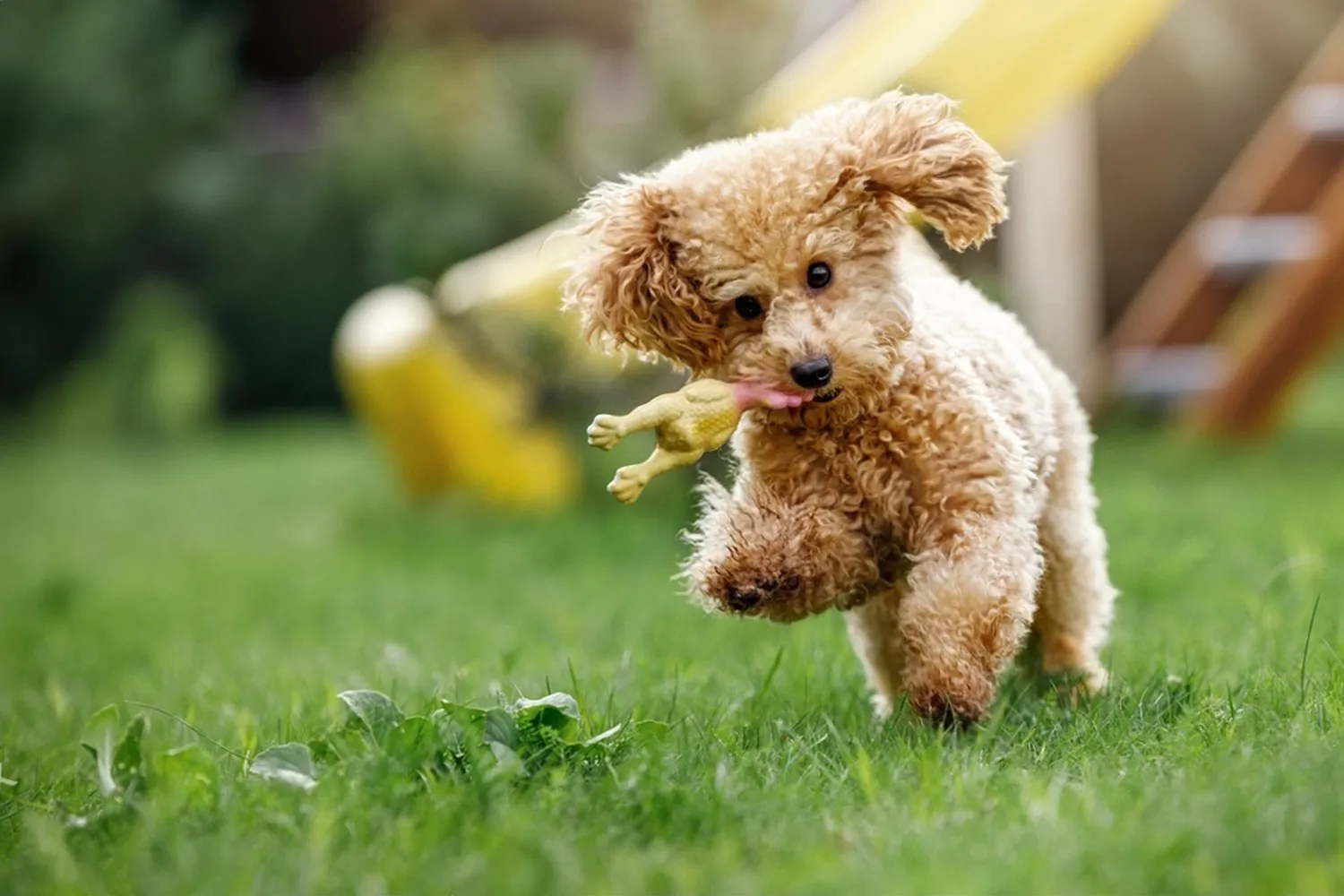
Are Mini Poodles Easy to Train?
Miniature Poodles are the kind of dogs that look at you like they’ve already figured out the lesson before you’ve even picked up the treat bag. They’re bright, curious, and usually very willing to learn, which makes training feel less like a chore and more like a game you’re playing together. Their eagerness to please is a huge advantage give them clear guidance and a bit of praise, and they’ll try their hearts out.
Because they’re nimble and quick on their feet, Mini Poodles do wonderfully in all kinds of training, from basic manners to fancier stuff like agility, rally, and trick work. I once taught a friend’s Mini to weave through a row of cones using leftover chicken as a reward; by the end of the week, he was practically dancing through them. It’s no surprise they’ve been used as circus dogs these little athletes love showing off and learning new stunts.
Here’s the catch: that big brain needs a job. If you don’t give a Mini Poodle enough mental stimulation, they’ll invent their own entertainment (and it might involve your socks). Start training early and keep it going for life, just in short, fun bursts. Think five to ten minutes, a few times a day. Mix it up with puzzle toys, hide and seek with treats, scent games in the hallway, and a new trick every week. Positive reinforcement is your best friend lots of treats, praise, and play.
A little structure, plenty of brain games, and consistent practice will take you far. With a Mini Poodle, you’re not just teaching commands you’re tapping into a sharp mind that’s happiest when it’s learning.
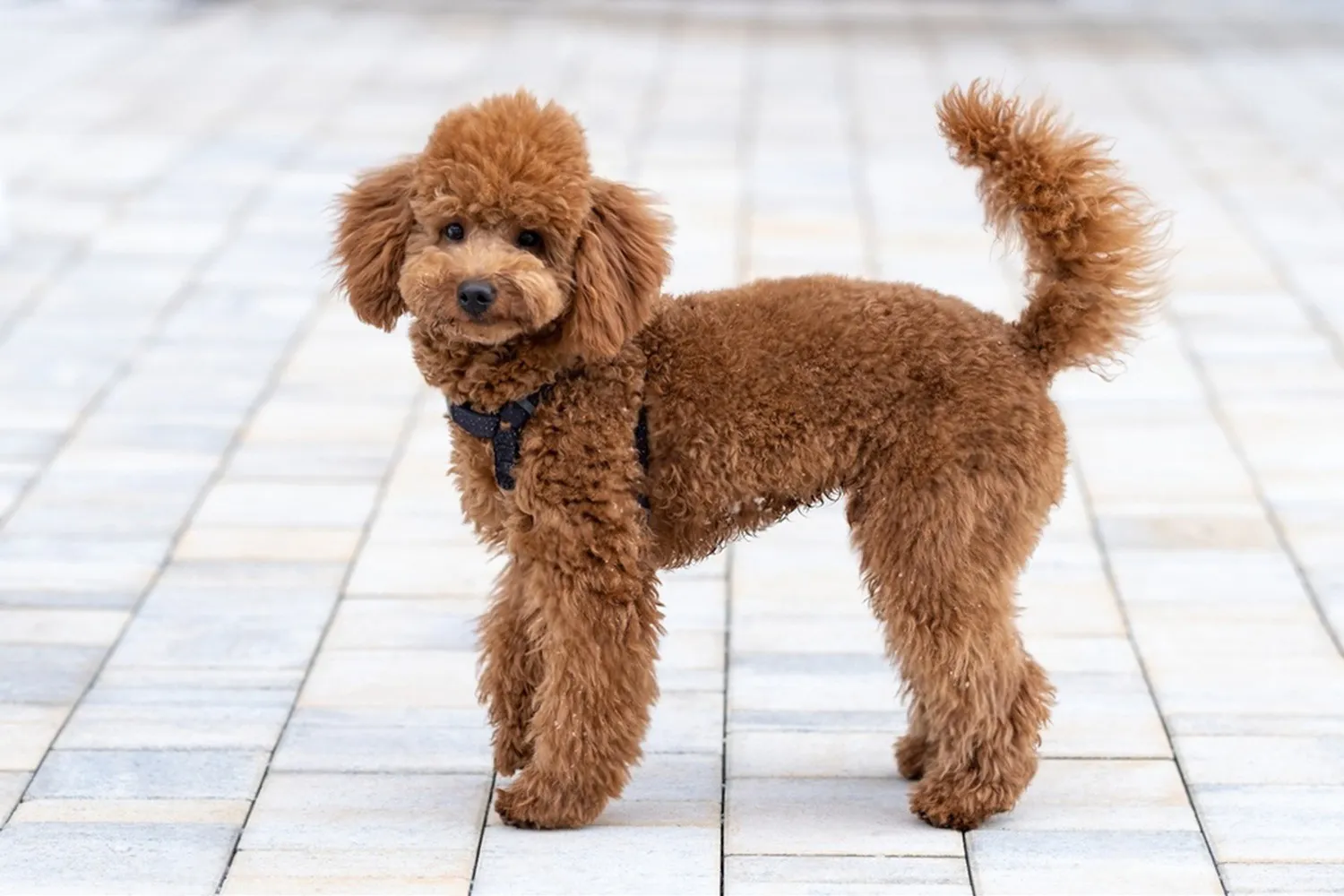
How Do Mini Poodles Behave? Temperament and Personality
Miniature Poodles are little dynamos with big hearts, and they thrive on being part of the action. Playful and a bit mischievous, they’ll happily invent their own games if you don’t join in mine once turned a pile of socks into a treasure hunt and then pranced around like he’d won a trophy. They’re smart, too, which is both delightful and dangerous; teach a trick once or twice and they’ve got it, but leave the pantry unlatched and they’ll figure that out just as quickly.
While generally friendly, many Minis can be cautious with new people. Expect a few alert barks at first more “Who goes there?” than “Back off!” and then a quick shift to waggy curiosity once they sense everything is safe. I’ve found that asking visitors to crouch sideways and offer a treat helps a shy Poodle warm up fast. Keep greetings low key, pair new faces with something yummy, and you’ll see their confidence grow with each positive experience.
Early socialization is your best friend here. Short puppy playdates, relaxed walks in different neighborhoods, even a calm visit to a dog friendly café can work wonders. Because they crave attention and mental stimulation, mix daily exercise with brain games: hide and seek, puzzle feeders, and five minute trick sessions. Use gentle, upbeat training Mini Poodles are sensitive to your tone and reward quiet moments so barking doesn’t become their go to hobby. After a good play session and a few brain teasers, don’t be surprised when your lively little shadow becomes a serious snuggler on the couch.
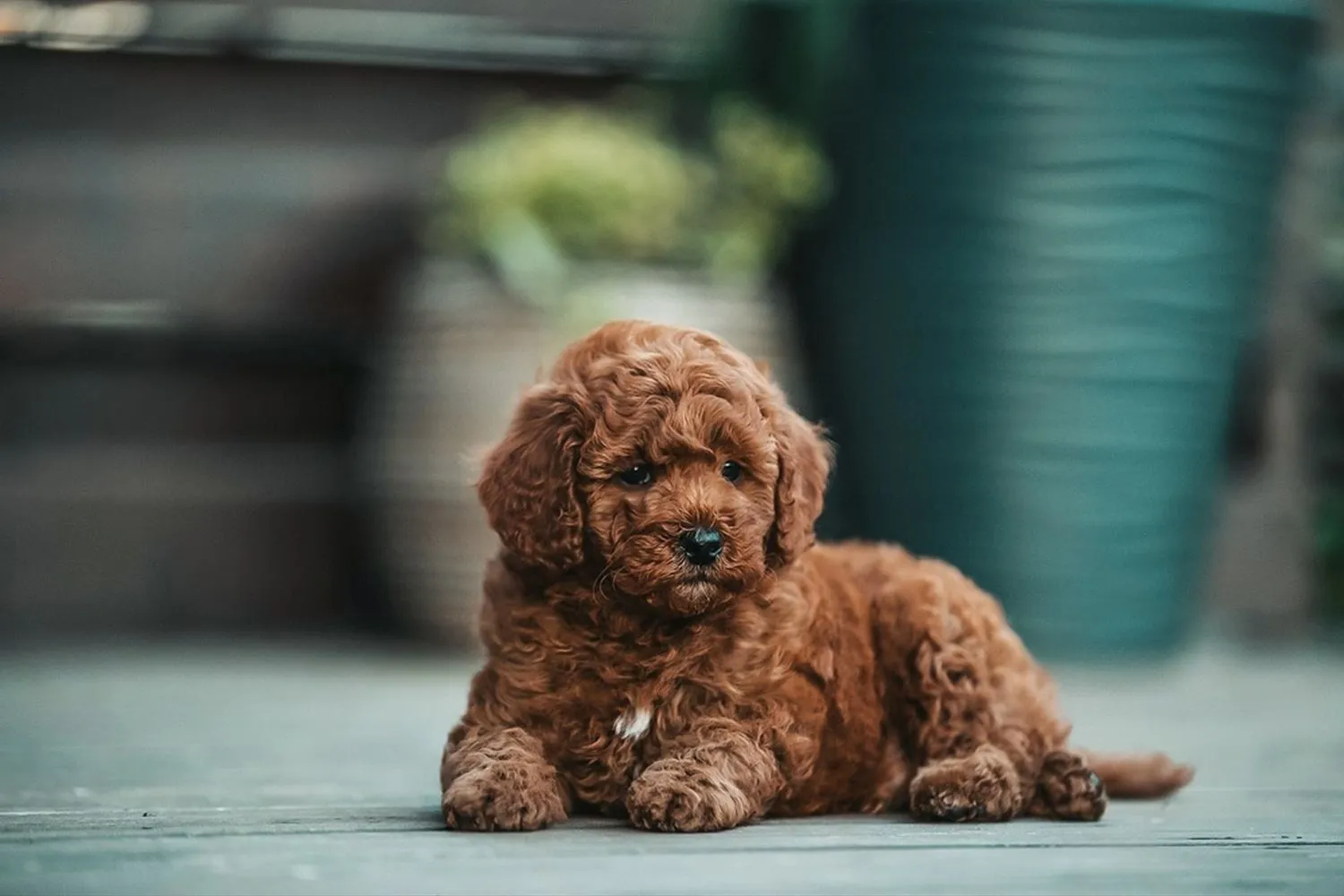
Do Miniature Poodles Have Common Health Issues?
Miniature Poodles are generally a sturdy, long lived bunch, but like many small breeds, they do have a few health quirks to keep on your radar. The good news is that choosing a reputable breeder and keeping up with routine vet care goes a long way. My own Mini Poodle has kept me on my toes over the years, but with regular checkups and a sensible routine, she’s been a happy, zippy companion well into her teens.
Let’s start with eyes, because Poodles are known for their soulful gaze and yes, their eyes can be sensitive. Conditions you might hear about include entropion (when the eyelid turns inward and lashes rub the eye), distichiasis and trichiasis (stray or misdirected lashes that irritate the cornea), cataracts (a cloudy lens that can blur vision), and progressive retinal atrophy or PRA (a genetic condition that slowly affects night vision and can lead to blindness). Glaucoma, which is increased pressure in the eye, is a true emergency if it strikes suddenly, and lacrimal duct atresia can cause either constant tearing or dryness. I remember noticing my friend’s Mini Poodle squinting in the evening light and pawing at her face turned out to be a couple of rogue lashes causing irritation. A quick visit to a veterinary ophthalmologist and a small procedure made a world of difference. As a habit, I keep the hair carefully trimmed around my Poodle’s eyes and watch for squinting, redness, or that telltale tear staining.
Beyond the eyes, there are a few systemic issues to be aware of. Addison’s disease shows up in Poodles more than in some other breeds; it’s when the adrenal glands don’t produce enough hormones, and symptoms can be vague at first tiredness, tummy upsets, weight loss. One of my neighbors went through this with her Mini; once diagnosed, daily medication put her dog back to chasing tennis balls like nothing had happened. Epilepsy can also occur, causing occasional seizures; keeping a simple “seizure diary” with dates, duration, and triggers helps your vet decide if and when medication is needed.
For the joints, small dogs can develop patellar luxation, where the kneecap slips out of place, and Legg Calvé Perthes disease, which affects the hip in young dogs and causes lameness. Keeping your Poodle slim and building up hind end strength with gentle hill walks, figure eight exercises, and controlled play can make a big difference. I learned to swap out slippery hardwood zoomies for rugs and runners my dog’s knees thanked me. In more serious cases, your vet may recommend surgery.
Two more conditions worth mentioning: Von Willebrand’s disease (a clotting disorder) and hypothyroidism. VWD can lead to prolonged bleeding after an injury or surgery, so it’s smart to ask for a screening test if your dog is going under anesthesia. Hypothyroidism can cause weight gain, thinning hair, and lethargy; it’s usually very manageable with daily thyroid medication. And as Mini Poodles age, some may develop mitral valve disease, a leaky heart valve that often shows up first as a heart murmur. Early detection and monitoring help you and your veterinarian decide on the right time to start medication. I make heart and dental checkups a two for one: a clean mouth supports overall health, and the vet always takes a good listen to that heartbeat.
Here’s what I keep an eye out for day to day:
– Eye changes: squinting, redness, cloudiness, light sensitivity, or new tear staining
– Mobility issues: skipping steps, bunny hopping, hesitation on stairs, hind leg lameness
– Energy and appetite: unexplained lethargy, vomiting, weight loss or gain
– Neurologic signs: any seizure like activity or odd “spacing out”
– Bleeding or bruising that seems to last longer than it should
– Coughing at rest or after mild activity, especially in seniors
Your best prevention plan starts before you bring a puppy home. Ask breeders about health testing and results for both parents. For Miniature Poodles, I like to see:
– An annual eye exam by a veterinary ophthalmologist (CAER)
– DNA testing for PRA and Von Willebrand’s disease
– Patella evaluations
– A basic cardiac exam, and thyroid screening when appropriate
Once your dog is home, keep a simple routine: annual wellness exams (twice yearly for seniors), a baseline blood panel as an adult and periodic rechecks, and prompt visits if something feels off. Maintain a lean body condition you should feel ribs with a light touch and prioritize joint friendly exercise over high impact jumping. Pet insurance or a dedicated savings fund can also take the sting out of unexpected vet bills; I learned that the year we dealt with a surprise eye ulcer, and I was grateful I’d planned ahead.
At the end of the day, Miniature Poodles really are healthy little athletes wrapped in curls. Most will never experience more than the occasional minor hiccup. But being aware of the common issues and partnering closely with your vet means you’ll catch the early warning signs and keep that bright Poodle spark shining for many, many years.
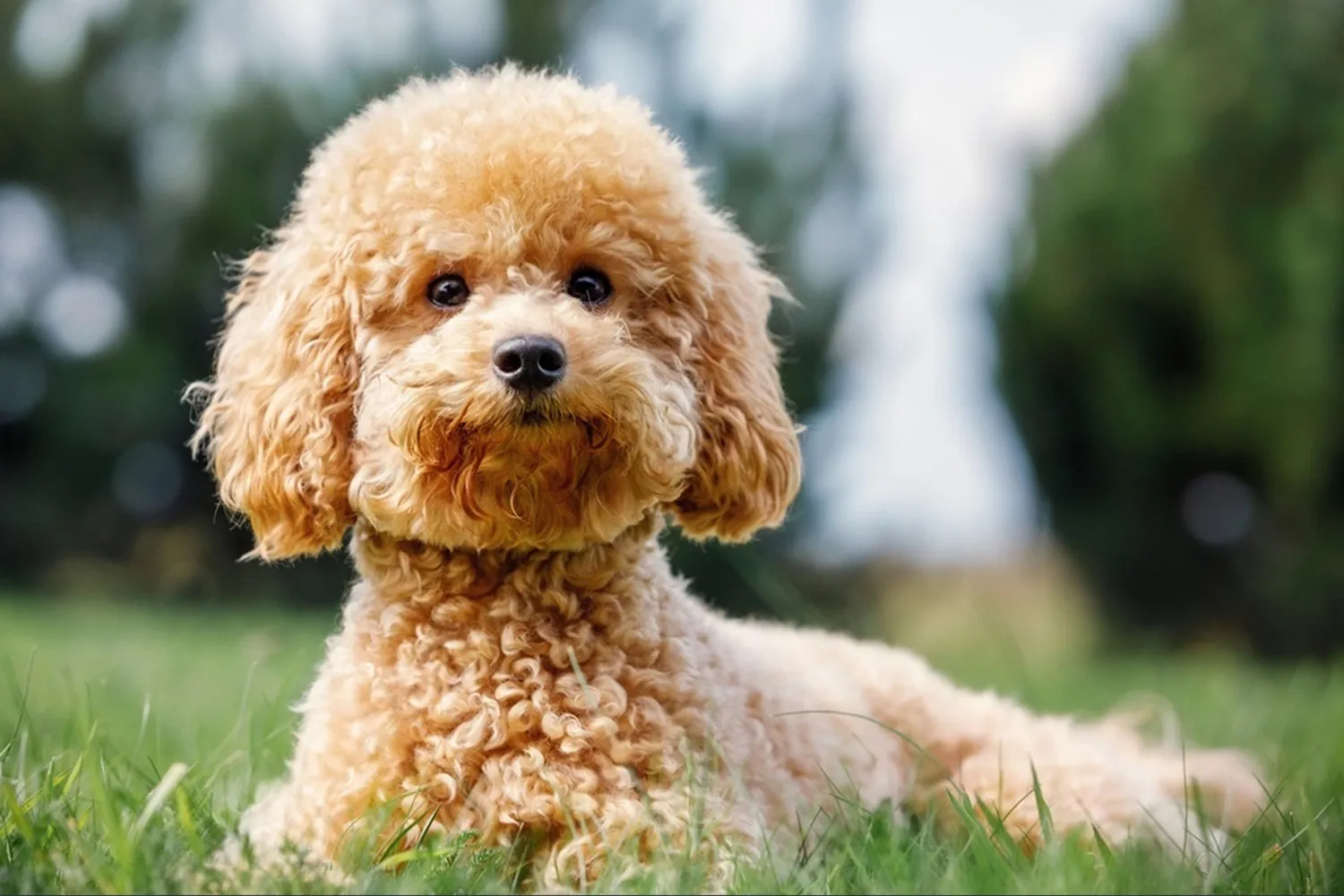
What Is the Lifespan of a Mini Poodle?
The average Miniature Poodle lives about 13 to 15 years, which is a wonderfully long time to share your life with a curly little shadow. With good care, many make it to 16 or even 17. My neighbor’s Mini Poodle, Daisy, just celebrated her sweet sixteen with a peanut butter pupcake and a slow sunset walk she still prances when she hears the treat jar.
A big part of reaching the upper end of that range comes down to the basics: smart nutrition, steady exercise, and regular vet checkups. I measure meals to keep weight in check, because extra pounds are hard on those dainty joints. Daily walks plus a few short play sessions do the trick, and I mix in “brain games” like hide and seek with kibble Mini Poodles are clever, and mental workouts keep them young at heart. Don’t skip dental care either; brushing and professional cleanings can add healthy years. As they reach about eight or so, I switch to twice yearly vet visits to catch little issues early.
A few Mini Poodle specific tips I’ve learned: use stairs or a ramp for the couch to be kind to knees, keep up with grooming to spot skin lumps or ear issues early, and watch for subtle changes like stiffness in the morning or cloudy eyes. My own routine is simple good food, gentle exercise, lots of training games, and a cozy bed in a quiet corner. Do that, and you’ll likely have a happy Mini Poodle companion well into their teens.
How Much Should a Mini Poodle Eat?
Every Mini Poodle is a little different, so the best place to start is with your veterinarian or a qualified canine nutritionist. They’ll help you choose a diet that suits your dog’s age, activity level, and any sensitivities. When I brought my Mini Poodle home, I felt overwhelmed by labels until my vet taught me to look for WSAVA and AAFCO on the bag. Those seals tell you the food is complete and balanced. I know the fancy “boutique” options can be tempting, but skip raw and grain free diets these have been linked to infection and heart disease, and that’s a gamble I won’t take with a pup I love.
Once your Mini Poodle is past puppyhood, most do well on two to three meals per day. Start with the feeding guide on your chosen food as a baseline, then adjust based on your dog’s size, metabolism, and daily exercise. I like using a kitchen scale to measure portions less guesswork, fewer tummy upsets. Keep an eye on body condition: you should feel ribs under a light layer, see a tuck at the waist from the side, and a gentle hourglass from above. On days we do extra training or a long walk, I add a smidge; on lazy rainy days, I trim it back. Small tweaks over a week work better than big changes overnight.
Treats are great, especially for training, but keep them modest. I follow the 10% rule so treats don’t crowd out real nutrition, and I break them into tiny pieces dogs care more about “how many” than “how big.” Resist the urge to share table scraps; it can encourage begging and isn’t the healthiest habit. I learned that the hard way when a relative slipped my dog roast chicken under the table, and we spent weeks un teaching the adorable but persistent stare. Instead, I keep a jar of high-quality training bites and some crunchy carrots. And no matter what you feed, make sure fresh water is always available I keep a second bowl in another room so my dog never has to go far for a sip.
Mini Poodle FAQs
Is a Mini Poodle ideal for a first time dog owner?
Yes Mini Poodles are a wonderful choice for first time owners. They’re bright, eager to please, and playful, which makes training feel more like a game than a chore. I remember helping a friend with her very first dog, a Mini Poodle named Pepper. Once she set a routine of daily walks, short training sessions, and a few puzzle toys, Pepper’s energy turned into the best kind of cuddly companion. Just keep in mind, these little athletes need a fair bit of activity and mental stimulation. If you prefer a couch first lifestyle, a Mini Poodle may feel a bit like a tiny personal trainer who insists on daily workouts.
Do Mini Poodles suffer from separation anxiety?
Many Mini Poodles can handle a typical workday alone, especially if they’ve had exercise and something to do. Beyond that, they may start to show signs of stress think barking, pacing, or chewing. I’ve had good luck with a routine: a brisk walk before I leave, a food stuffed toy or puzzle for the first hour, and a check-in camera so I can see they’ve settled. If you’re running late or know you’ll be gone long hours, a dog walker, neighbor visit, or a day at doggy daycare can make all the difference. Start “alone time training” early short, positive departures that build up gradually and you’ll set them up for success.
Are Mini Poodles hypoallergenic dogs?
No breed is 100% hypoallergenic, but Poodles tend to produce fewer allergens than many breeds, which is why they’re often a better fit for allergy prone families. Their coat grows continuously and sheds very little, trapping dander rather than dropping it everywhere. That’s great for your furniture, but it means you’ll want a regular grooming routine to keep their coat healthy. If allergies are a concern, meet a Mini Poodle before committing and see how you feel after some time together. I also find that using a good vacuum, washing dog bedding weekly, and brushing outdoors keeps sniffles at bay.
Will a Mini Poodle need professional grooming?
Absolutely. Mini Poodles require consistent grooming bathing, shaving, and scissoring and most owners don’t have the tools or training for a full clip at home. Plan on professional grooming every 4-6 weeks, plus at home brushing several times a week to prevent mats (especially behind the ears, under the collar, and in the armpits). I learned the hard way that skipping just a few brushes can turn a fluffy “teddy bear” look into surprise tangles. A slicker brush and a metal comb to the skin are your best friends. Bring photos of styles you like to your groomer teddy bear, lamb trim, or something sportier and start gentle grooming handling early so your pup thinks spa day is no big deal.
Disclaimer:
This article is for informational purposes only and doesn’t replace professional veterinary or training advice. Always consult a certified vet or dog trainer for guidance specific to your pup.
